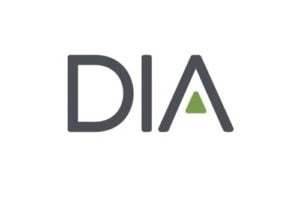Writing in the March 2022 edition of DIA’s Global Forum magazine, Jessie Zhu of Deltamed Co. Ltd./Pharmaron Clinical and Monica Juping Xu of Taimei Medical Technology outline the progress of pharmacovigilance standards in China, and make the call for greater levels of digitalisation and training.
Since China joined ICH in 2017, much effort has been expended in developing national pharmacovigilance standards harmonized with ICH guidelines. The National Medical Products Administration (NMPA), China’s regulatory authority, has announced a series of pharmacovigilance regulations and guidelines including both the pre-market (clinical) and post-marketing phases. After several years of planning and alignment, NMPA announced its guidance for China Good Pharmacovigilance Practice (China GVP) in May 2021, and it became effective on December 1, 2021.
Many marketing authorization holders (MAHs) have studied its requirements, defined quality objectives, and worked to establish or acquire compliant PV organizations, systems, documents, databases, and dictionaries. For example, China GVP mentions the Pharmacovigilance System Master File and Pharmacovigilance Plan, as part of the marketing authorization holder (MAH) or sponsor obligation to establish a pharmacovigilance system, for the first time in China.
The China GVP and, for example, the European Medicines Agency GVP are generally similar. Specific operational-level characteristics include:
- China GVP devotes one full chapter to specifically describing quality requirements and goals to ensure and maintain the compliance and effectiveness of the pharmacovigilance system. This includes determining PV quality indicators and implementing regular internal audits of key routine PV activities. The document also describes how to plan, manage, and audit PV outsourcing.
- Requirements for establishing related work groups and resources, such as the Drug Safety Committee, and definition of PV personnel training, PV facilities and equipment, and other organizational responsibilities of the PV department.
- Requirements for signal detection, how to assess and process safety information, post-marketing safety studies, and requirements for transmitting individual case safety reports to the regulatory authority.
- Direction for preparation and management of the periodic safety update report (PSUR), pharmacovigilance system master file (PSMF), PV plan, and other procedural documents. Direction is also provided for preparation and management of other administrative documents as well as for data and records retention.
- One chapter specifically describes clinical trial PV requirements.
Overall, the change in China GVP can be described as moving from a modular focus on individual case safety reporting and compliance with specific regulatory requirements toward a more scientific and systematic approach to product safety under the mission to ensure patient safety. In response, the clinical research and pharmaceutical industries in China are turning their focus to building effective, end-to-end PV systems and to enhancing risk identification and management.
But as the saying goes: “Rome wasn’t built in a day.”
Encouraging innovation in therapeutic product development was an important driver behind the China regulatory reform that began in 2015. This innovation-friendly environment has led to the growth of many biotechnology start ups in China.
These relatively small and new organizations face the challenge and opportunity of building their PV capabilities from the ground up. Multinational companies often have the advantages of a longer history and more experience with PV, including pre-existing PV systems, facilities, frameworks, and personnel, than their local counterparts in China. The challenge for multinational companies will be integrating China GVP into existing resources.
Most local companies with drugs already on the market experience PV only through passive safety reporting and lack the resources to scientifically and systematically assess risk and safety. Building a comprehensive system that effectively manages risk and monitors safety of products and patients presents a large challenge.



